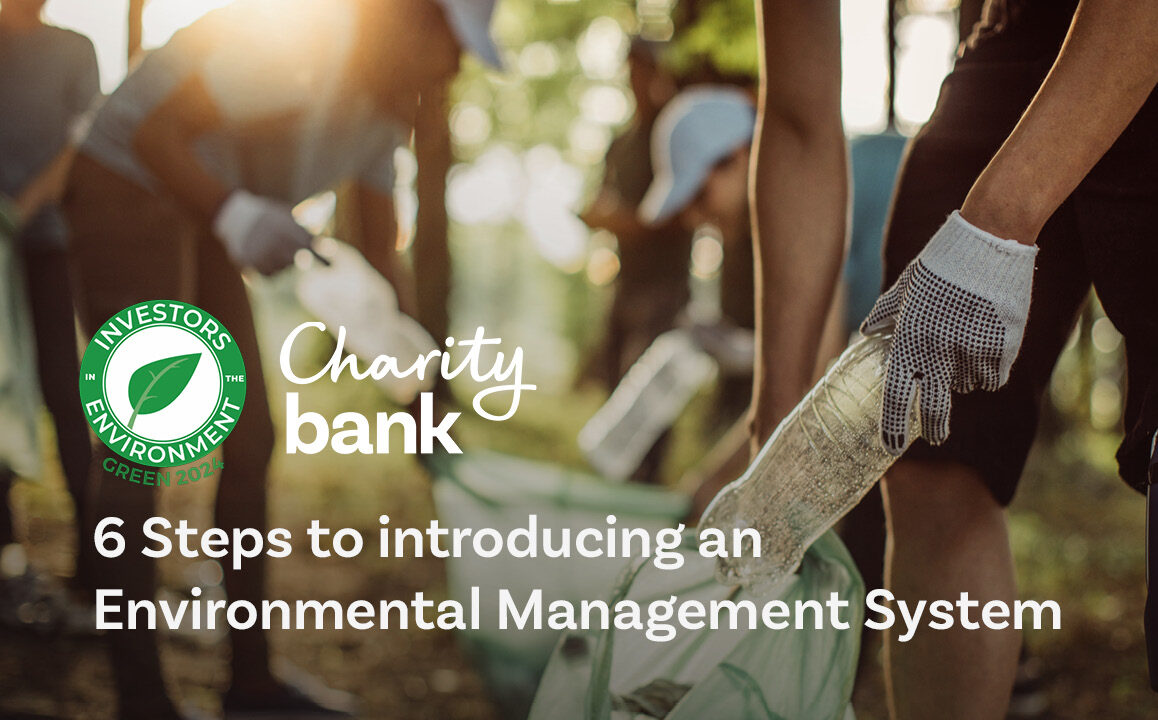
How To Establish an Environmental Management System
We’ve partnered with iiE to create a 6-step guide for establishing an EMS. Our 3-minute video will help you implement it for a sustainable future. It’s a cycle of ongoing improvement.
We’ve teamed up with Investors in the Environment (iiE), a national environmental accreditation scheme, to produce a six-step guide to establishing an Environmental Management System (EMS). This is an important step to demonstrate your commitment to sustainability and reducing your environmental impact.
In just three minutes, we’ll guide you through the process of introducing an EMS to your organisation. By following these six steps, you’re on a path to a more sustainable future. Remember, it’s a cycle of ongoing improvement – Watch the video here.
Step 1: Develop an Environmental Policy
A policy is a statement of your organisation’s commitment to reducing its environmental impact. It should address key aspects such as energy use and waste management. Ensure the policy is signed by a senior management team member to demonstrate top-level commitment and support for improving environmental performance. The policy should also outline who is responsible for its day-to-day implementation and be reviewed regularly to stay aligned with your environmental goals.
Step 2: Appoint a Leader
It’s crucial to appoint a leader for your environmental programme and allocate enough time within their working week for this role. Offering introductory training can help them feel confident and comfortable. Regular green team meetings with members from different departments can bring diverse ideas and perspectives, encouraging wider staff participation through surveys or suggestion boxes.
Step 3: Measure Resources
Identify and measure the resources your organisation uses or produces, such as electricity, natural gas, water, transport, paper, and waste. Start with a few resources and expand as you become more confident in collecting and reviewing data. Aim to take actual meter readings where possible or use accurate bills to collect data. Establish a baseline year for comparison, which could align with the calendar year, financial year, or any other reporting period.
Step 4: Set Reduction Targets
Set a reduction target of at least 2% year on year or be more ambitious if you have plans to support higher targets. Prioritise actions that have the biggest impact or are easiest to implement. Regularly review your progress and update action plans as needed.
Step 5: Encourage Staff Participation
Implement as many feasible staff suggestions as possible to keep them motivated and show that their voices are heard. Organise events such as tree planting, fundraising, and conservation activities. Support wider engagement campaigns like Zero Waste Week.
Step 6: Evaluate and Communicate
After a year, evaluate your performance by creating a report to showcase your achievements and outline future actions. Consider third-party evaluation to verify your environmental claims and ensure you’re on the right path. Communicate your journey throughout the year and celebrate staff contributions along the way.
The views on this page are those of Investors in the Environment.
About Charity Bank
Charity Bank is the loans and savings bank owned by and committed to supporting the social sector. Since 2002, we have used our savers’ money to make more than 1280 loans totalling over £500m to housing, education, social care, community and other social purpose organisations.
Nothing in this article constitutes an invitation to engage in investment activity nor is it advice or a recommendation and professional advice should be taken before any course of action is pursued.


